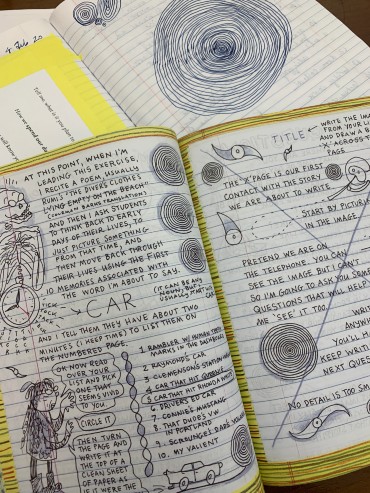By: Anne Fernald, Ph.D.
Professor of English and Women’s, Gender, and Sexuality Studies
Special Advisor to the Provost for Faculty Development

The Incubator Group of the ReImagining Higher Education Grant meets every week. We are 25 people–undergraduates, graduate students, faculty, staff, and community members: a very diverse group, united in our enthusiasm for making change.
For our first few weeks, we have been getting to know each other through a series of brainstorming exercises. Every week, we begin with a reading: taking turns, participants bring in a short text that inspires their thinking and we listen and doodle in our composition notebooks. This helps us leave our day behind and enter the space ready to think creatively together.
At our first brainstorming session, following an activity that the Provost led with the Deans earlier this year, we divided into four groups and brainstormed daunting problems likely to be facing higher education, New York City, our county, and our world in the coming decade. We talked about climate change, college accessibility, and the role of the liberal arts in a changing workplace among many other issues. These were daunting problems indeed!
But they became the fodder for the following week’s activity where we played a kind of grant proposal SNAP!–where we randomly matched daunting problems with modes for solving them. The top twenty daunting problems on one deck of cards and twenty different modes universities have for addressing problems on the other (for example, research project, conference, performance, or podcast). Some combinations were ridiculous–others surprisingly apt. After a few rounds at random, each group came up with four promising approaches to solving four daunting problems. That led us to a list of twenty-one (21!–one group is made up of overachievers!).
Then, we took the top ten of these the following week and dove a bit more deeply into the process of beginning to develop a project, dividing into groups and taking ten minutes to develop an approach and then traveling around, listening, learning, and refining our approaches.
Amidst all this collective work, we have also been mindful to take time each week to reflect and discuss what our individual goals are: why are we each here? What do we hope to learn and contribute? As we head into our next phase, where we will divide into five teams and work together on five new grant proposals for transformative change in higher education, we hope that this groundwork of goal-setting, team-building, and brainstorming will have been good preparation.
